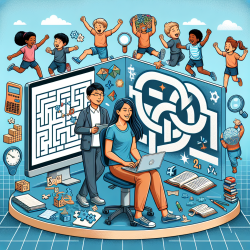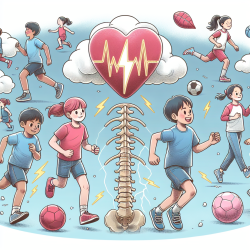Introduction
As a Special Education Director, one of my key responsibilities is to ensure the well-being and educational success of all students, including those with hearing impairments. Recent research, particularly the article titled "The Prevention of Noise Induced Hearing Loss in Children" by Robert V. Harrison, provides critical insights into the physiological mechanisms and prevention strategies for noise-induced hearing loss (NIHL) in children. This blog post aims to help practitioners enhance their skills by implementing the outcomes of this research and encouraging further exploration into this significant issue.
Understanding Noise-Induced Hearing Loss
Noise-induced hearing loss is a growing concern, especially in today's world where children are frequently exposed to high levels of noise from various sources like MP3 players, video games, and entertainment venues. The research by Harrison highlights the complexity of acoustic trauma, which can cause both mechanical and metabolic damage to the cochlea. This damage can lead to temporary or permanent hearing loss, making it crucial for practitioners to understand and mitigate these risks.
Implementing Research Outcomes
To effectively prevent NIHL in children, practitioners can adopt several strategies based on Harrison's findings:
- Educational Programs: Develop and implement educational programs for children and parents that emphasize the risks of loud noise exposure and the importance of hearing protection.
- Regular Hearing Assessments: Encourage regular hearing assessments for children, especially those frequently exposed to high noise levels, to detect early signs of hearing loss.
- Safe Listening Practices: Promote safe listening practices, such as using volume limiters on personal audio devices and taking regular breaks from noise exposure.
- Advocacy for Noise Regulation: Advocate for stricter noise regulation in public spaces and the development of quieter technologies.
Encouraging Further Research
While Harrison's research provides a solid foundation, there is still much to learn about NIHL in children. Practitioners are encouraged to engage in further research to explore new prevention methods and treatment options. Collaborative efforts with audiologists, educators, and researchers can lead to innovative solutions and improved outcomes for children with hearing impairments.
Conclusion
Implementing the outcomes of research on noise-induced hearing loss is essential for protecting children's hearing health and ensuring their educational success. By staying informed and proactive, practitioners can make a significant impact in preventing NIHL and supporting students with hearing challenges. To read the original research paper, please follow this link: The Prevention of Noise Induced Hearing Loss in Children.










